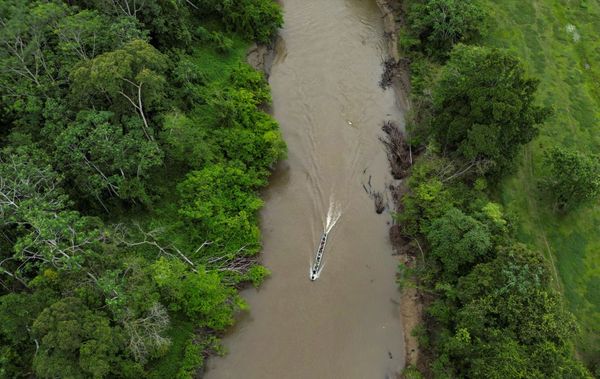It's the high-tech fishing system authorities have embraced to reduce shark attacks – but the program's operating hours is letting one dangerous species off the hook.
At major shark attack hotspots on the east coast, governments have invested in sophisticated catch-and-release fishing programs such as the shark management alert in real time (SMART) system to avoid bites.
The concept, operating in New South Wales and being trialled in Queensland, relies on a network of anchored fishing lines connected to buoys containing a communication device.
Species thought to pose the greatest threat to bathers such as white, tiger and bull sharks are lured into the lines with sea mullet baits.
When the sharks take the bait and become hooked, the attached buoy sends a signal confirming capture and experts go to the location, fit a sonar and release the shark.
The tags, positioned on the fins, then track the animals and trigger warnings to beachgoers or lifeguards if they swim near popular beaches.
Pioneered at notorious shark attack spot Reunion Island in the Indian ocean, the technology is considered a way to avoid killing potentially dangerous species and preventing attacks on swimmers.
The NSW government has been relying on the system at shark hotspots along the coast including at Evans Head and Ballina in the state's north.
In the region there have been sightings of large shivers of bull sharks and significant shark-bite incidents, including two fatal attacks in the past 15 years.
Researchers undertook a study of the northern NSW programs to see if changes to the way lines were baited would improve catch rates and reduce the capture of non-target species.
Their research, published earlier this year said while tiger and white sharks made up 67 per cent of the total catch between December 2019 and May 2021, bull sharks were rarely caught.
Just eight bull sharks – or 3 per cent of the catch — were hooked on the lines during the 18-month period, compared to the 137 white sharks and 65 tiger sharks hooked, according to the paper.
It said the smart fishing lines were only being set between sunrise and 8am and retrieved at least two hours before sunset and noted this was not the time that bull sharks were most active and might explain the low catch rate.
"An alternative hypothesis to explain continued low catches of bull sharks, irrespective of where in the water column the baits are presented, may be related to diel foraging patterns for this species," the researchers said.
"Higher catch rates and increased activity associated with foraging of bull sharks have been reported during low-light periods (at night, dawn and dusk), yet the SMART drumlines are deployed during daylight hours."
The Australian Institute of Marine Science describes bull sharks as "very dangerous" due to their aggressive nature and liking for shallow habitats.
In the past 10 years there have been 16 recorded bull shark attacks in Australia, including two fatalities.
A spokeswoman for the NSW primary industries department would not say if the low catch rate of bull sharks was concerning but said the low catch rate was not unusual given bull shark behaviours.
She said the current catch of bull sharks was "similar" to other regions.
The spokeswoman said the operators retrieved the lines before sunset because it allowed enough time to safely navigate across river mouths, removed gear and to handle any sharks that are caught just before or during retrieval.
She said NSW DPI research had found water temperatures were a key indicator of a bull shark presence and there was often an increase during and after flooding events.
Bull sharks caught in Queensland trial
In Queensland the fisheries department has been using a similar system in a trial at four beaches on the Capricorn coast called the "catch alert drumline" that has so far snared 40 bull sharks between September 9, 2021 to January 31 this year.
Seven tiger and 45 other sharks were reported in the period.
This week a spokesperson for the department revealed the program also had a similar daylight hours of operations focus, starting in the hour before sunrise and concluding one hour before sunset, weather permitting.
While catch alert drumlines were removed outside of operational hours, traditional catch-and-kill drumlines remained in the water overnight.
The spokesperson said a scientific evaluation process was currently underway to inform future management decisions and catch alert drumlines would be used while this takes place.
"Fisheries Queensland will consult with the shark control program scientific working group on the preliminary results before decisions on the future of the trial will be made,'' he said.
The Queensland government has previously said, pending the outcome of the current trial, it is considering expanding the catch alert lines program to other locations of the Great Barrier Reef Marine Park, including Cairns, Townsville and Mackay.
The most recent bull shark attack in Queensland was in December 2021 at Rocky Island near Yarabah near Cairns.
Sharks attracted to flood waters
The research results have been met with caution by noted bull shark expert Jonathan Werry, who conducted groundbreaking research catching, tagging and tracking bull sharks in the Gold Coast canals that found the animals were migrating from Queensland to NSW.
He said the low catch rates could be related to the migratory behaviour of adult animals and a key influencer in bull shark activity was rainfall.
"After periods of heavy rain and the subsequent murky water outflows into the near shore areas, bulls utilise these outflows for feeding as the nutrients boost the local food chain through creating temporal plankton and subsequent bait fish concentration,'' he said.
"These are periods when it is best not to be in the water as a swimmer."
On Tuesday the West Australian government announced the expansion of its current shark tagging program to target adult bull sharks to track their presence in the Swan-Canning Estuary in response to 16-year-old Stella Berry's death last month.
The WA primary industry department will investigate the use of three new acoustic shark monitoring receivers in the river providing real-time notifications of tagged shark activity, Fisheries Minister Don Punch said.
NSW's last recorded fatality was in 2022, when a white shark was suspected of killing a diver in Sydney's Little Bay.
Queensland's last recorded fatal attack was on a surfer at Greenmount beach on the Gold Coast in 2020 and involved a white shark.







